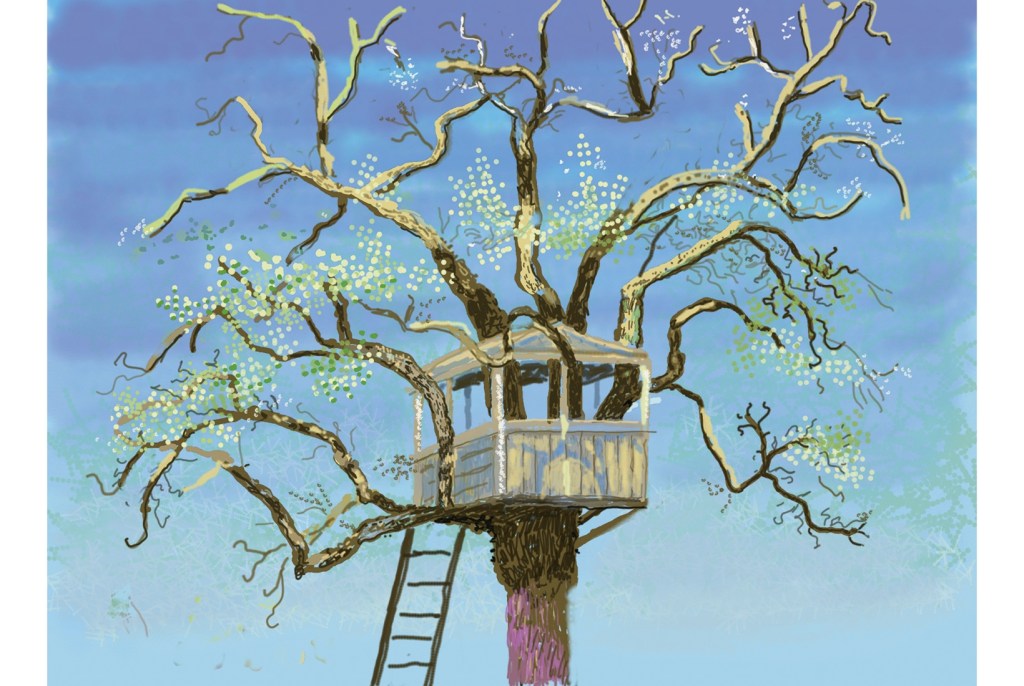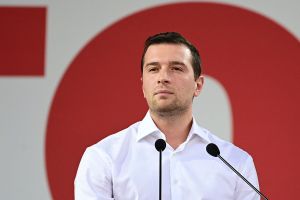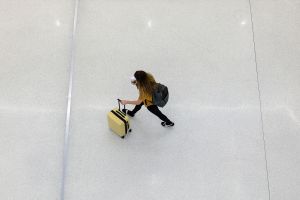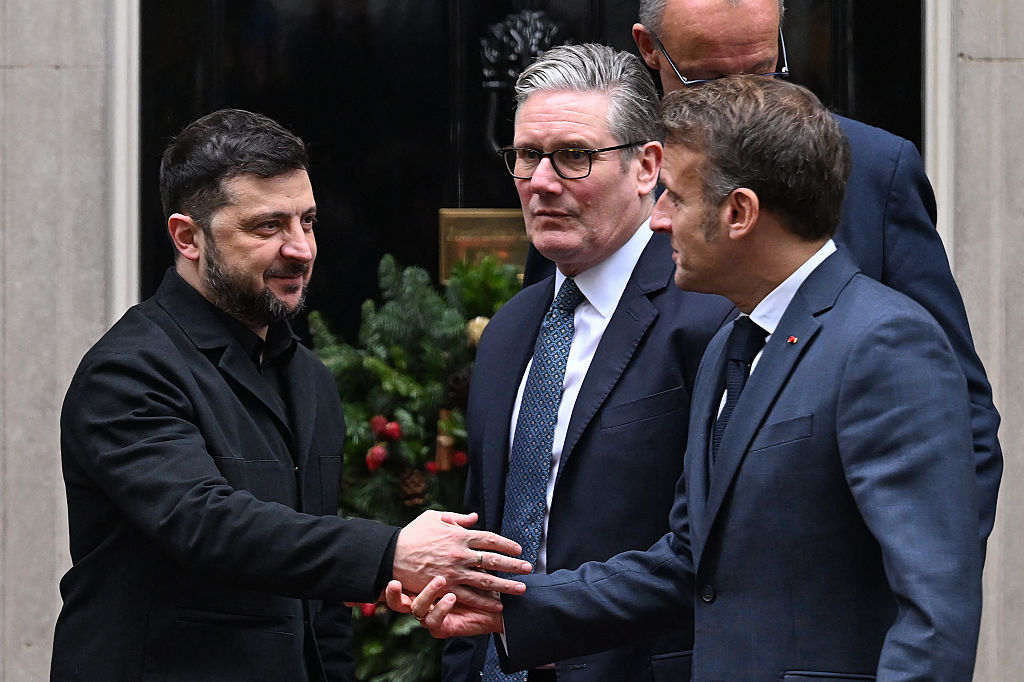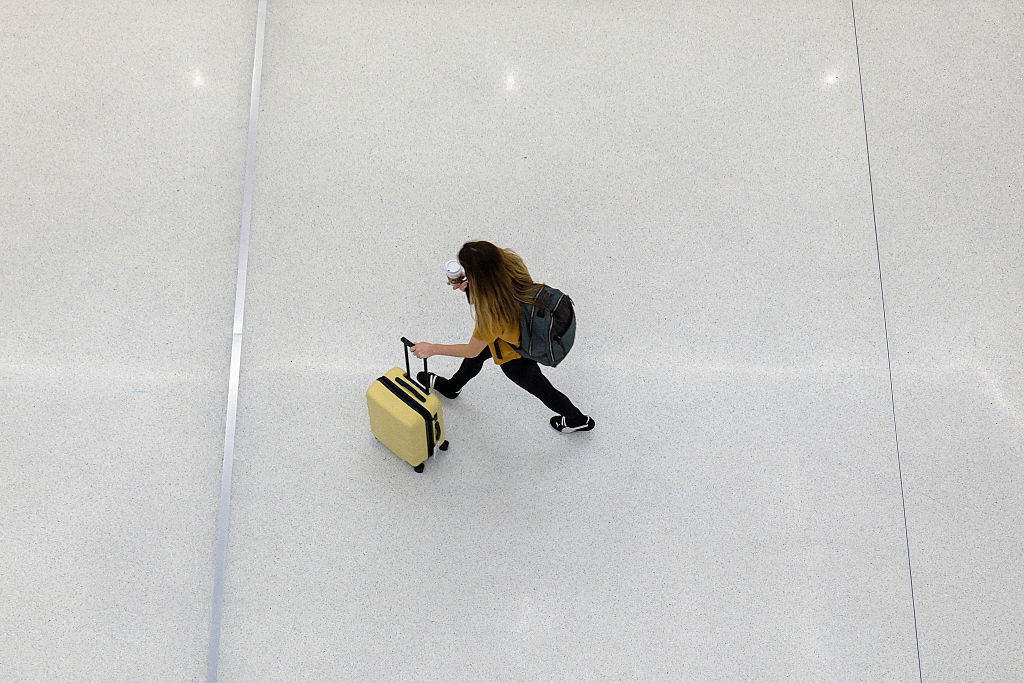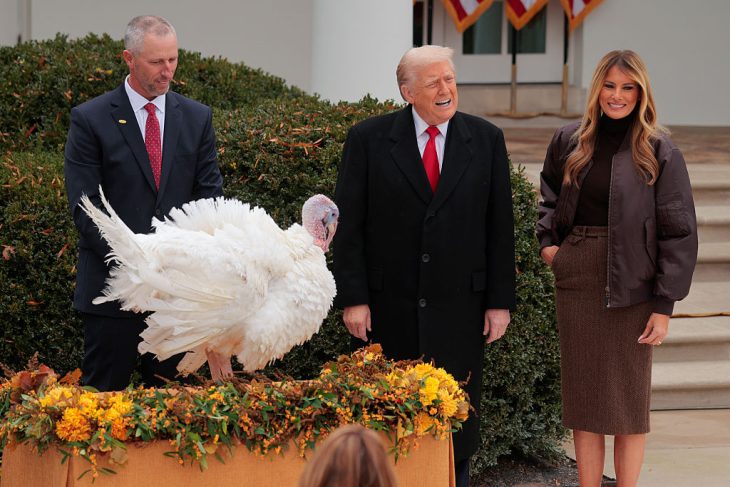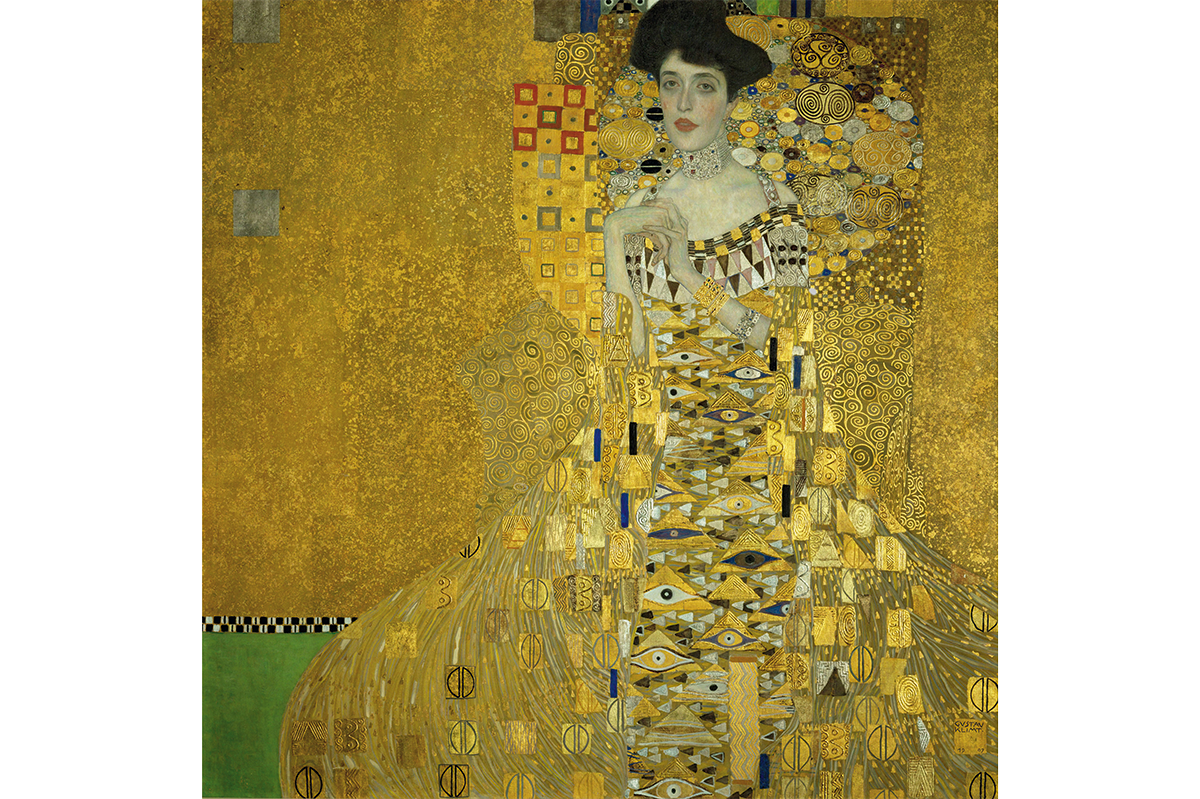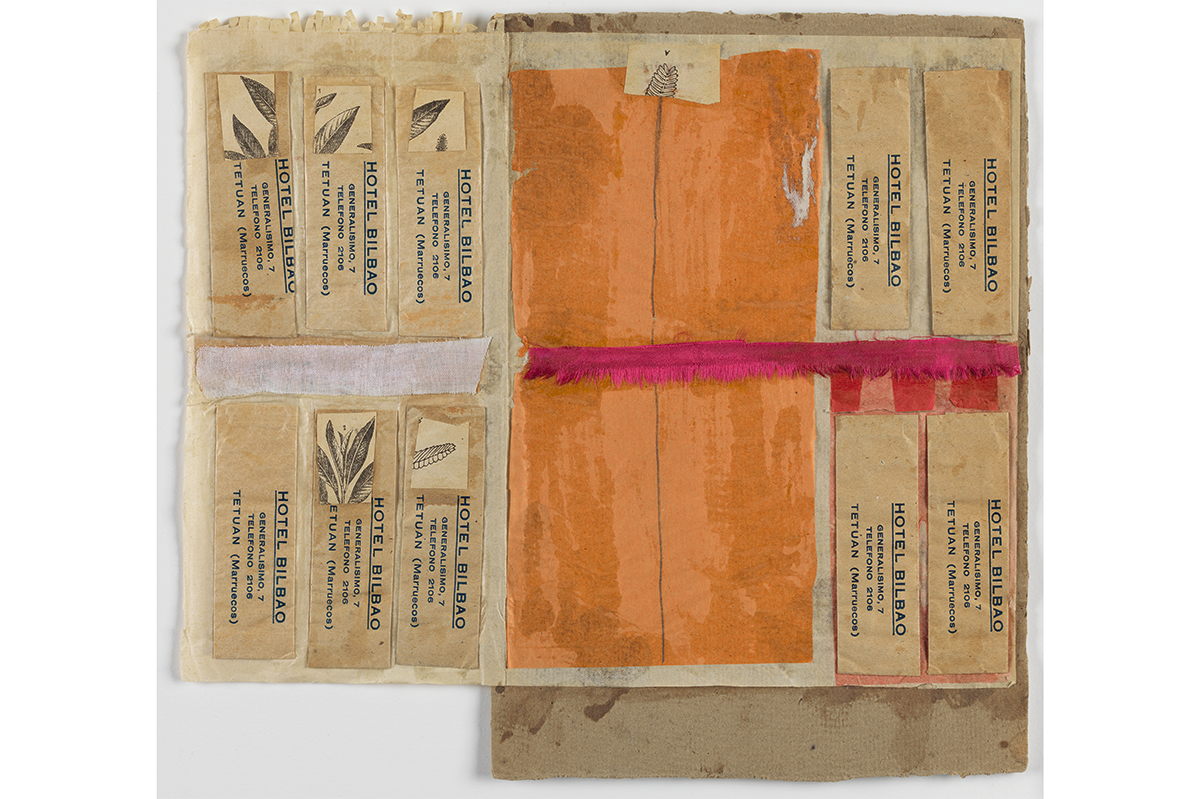Spring was not canceled. Neither have the arts ceased to function. David Hockney’s marvelous exhibition at London’s National Portrait Gallery may be sadly shut, but the artist himself is firing on all cylinders.
‘I was just drawing on this thing I’m talking to you on,’ he announced when I spoke to him via FaceTime the other day. He was sitting in the sunshine outside his half-timbered farmhouse in Normandy.
‘We’re very busy here,’ Hockney explained, ‘because all the blossom is just coming out, and there’s a lot more to come. The big cherry tree looks glorious right now. Next the leaves will open, but at the moment the blossom is ravishing. The apple trees haven’t started yet!’ Obviously he has a packed schedule ahead.
This way of life, though isolated, is not the result of the lockdown. Hockney had always planned to spend long months in the French countryside, just drawing and painting. That was how he spent most of last year too. What art historians of the future may call his second French period — Hockney spent a couple of years in Paris in the early 1970s — began on the spur of the moment the autumn before last. The artist made a short trip across the Channel and enjoyed it so much that he snapped up a pied-à-terre.
Last summer, in a distant era when it was quite normal to travel so far, I paid a visit chez Hockney. His acquisition turned out to be an old rustic building folded into a rolling landscape: lawns, trees, a pond and meadowland tumbling down to a stream at the bottom of the valley. One of the barns had been converted into a spacious studio. Just stepping into it, Hockney claimed, made him feel years younger. He was 81 then. Now his 83rd birthday is approaching. ‘But I’m reasonably healthy still for my age, and I’m working away.’
By the time I arrived, Hockney and his team had already adjusted to a diet of andouillette sausage and tripe à la mode de Caen. ‘I think I’ve found a real paradise,’ he enthused. Especially now, when even trips to the little restaurant a few miles away are out of the question, life in the Norman countryside must be similar to that led by its 17th- and 18th-century inhabitants. Except, as Hockney points out, for a few modern conveniences such as plumbing and heating. He quoted Rudyard Kipling’s poem ‘A Truthful Song’, in which an ancient Egyptian meets a modern builder: ‘“Your glazing is new and your plumbing’s strange, / But otherwise I perceive no change”. That’s true, isn’t it?’
In a way, what Hockney himself is doing hasn’t altered much for centuries. The tablet computer on which he is working would certainly be unfamiliar to Constable or Cézanne. But making endless fresh and different pictures from a small, familiar area would not. Monet’s gardens at Giverny are more intensively horticultural than Hockney’s domain on the other side of Normandy. But the principle is the same. (By the way, Monet carried on placidly painting his water lilies right through World War One, even when the enemy army seemed about to occupy the area.)
For artists it can be a case of the more you look, the more you find. Therefore living in the middle of one’s subject is ideal. ‘Right now I can see a ripple of light on the trees which looks absolutely marvelous. It’s caused by the sun as it slowly goes down. But you have to get that down quickly because it’s gradually moving.’
For Hockney those trees have become old friends. Day by day he follows their transformation from bare branches to the current ebullience of leaves and petals. He is far from alone among artists in thinking that Claude Monet arranged the perfect way of life (though Hockney is prepared to admit that spending all day, every day, depicting reflections on the surface of a pond wouldn’t suit everyone).
‘Painters live in the now,’ he muses. ‘I do. That’s why I was always against communism: people telling you that if you sacrifice the present for the future it’s going to be terrific. But how did they know it’s going to be terrific? Nobody knows.’
So, far from being an unexpected interruption, a few months of isolation were exactly what he was looking forward to. In February he spent two weeks or so in London, when he had two exhibitions opening. For Hockney, though, nature was urgently calling. As soon as possible, he was off to France, documenting the first appearance of greenery on the bare twigs.
In 2019 he had done an enormous amount of work there, including panoramic drawings on sketch books that open out, concertina fashion. This time he came prepared with a new medium. The app he had used a decade ago for digital drawing has, in the way of new technology, become outdated and unusable. But Jonathan Wilkinson, Hockney’s technical assistant, arranged for a new one to be tailored to his requirements. He finds it ideal for landscape subjects, because of its speed. ‘On the iPad I can catch the light very quickly. I think it’s the fastest medium I’ve ever found. Much faster than watercolor. And everything — light, clouds, shadows — is changing all the time.’
So Hockney was ready to begin as soon as the spring got under way. One of his dicta is that for a painter there’s no such thing as bad weather: ‘If it’s a dull day, you draw a dull day.’ But at the moment, in a memorably beautiful spring, he is especially engaged: ‘I can’t stop actually, everywhere I look there’s something. So I don’t mind not having any visitors, I get on with a lot more work.’
One night recently Hockney got up and noticed an enormous full moon shining through the window. Before he went back to sleep he made a couple of sketches, with scudding clouds over the shadowy treetops. ‘If I’d had to use brushes and paints it would have taken much longer and I would have lost the impact it had on me.’
Paradoxically, the fact that Hockney’s current works are digital gives them an unusual authenticity. The image that appears on any screen, anywhere, is exactly what he was looking at as he drew it. In a world in which the only exhibitions are virtual, that makes them seem direct and real.
This article was originally published in The Spectator’s 10,000th UK magazine. Subscribe to the US edition here.



